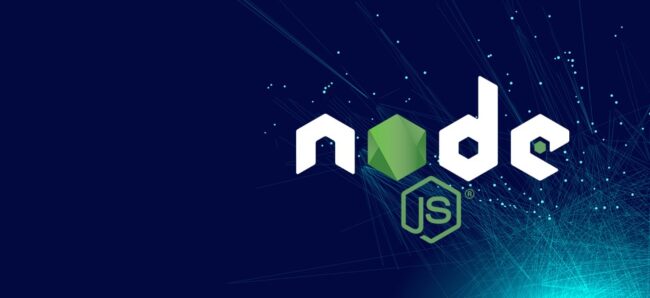Blockchain technology, rapidly evolving in 2024, serves as a foundation in various industries, including finance and healthcare. This guide aims to demystify blockchain, detailing its mechanisms, applications, and benefits.
Find out what blockchain is and how new data blocks are added to the chain. We will explain the advantages and disadvantages of blockchain technology compared to traditional systems. Blockchain has a variety of use cases across different industries, from finance to NFTs, which we will elaborate on.
This blog also explains technical aspects like consensus mechanisms and development platforms. As an aspiring blockchain developer, we will also guide you on skills, career paths, and educational resources.
What Is Blockchain and How Does It Work


How blockchain works in five different steps.
A blockchain network is a huge database (digital ledger) that consists of data blocks that are chained together chronologically. New data blocks can be added to the blockchain after they have been reviewed and validated by a miner – a dedicated computer within the network. A blockchain thus represents a history of datasets (e.g., financial transactions).
A particular attribute of blockchain technology is its decentralization; a blockchain is a distributed database. That means each party participating in a blockchain network saves a complete copy of the database on their computer. This practice makes it virtually impossible to subsequently modify the data on a blockchain – even if one copy is manipulated, thousands of correct copies are still distributed worldwide. Defective or manipulated data sets can thus easily be eliminated from the network.
The order of the data blocks is also secured by a checksum so that the order of the blocks can’t be altered.
Cryptography generates an immutable timestamp whenever one block links to another. Such an identifying number referring on block to another is also called “hash”. This record is permanent, and the accuracy of sensitive information can be verified. No central authority is required to control databases, as is the case with traditional databases.
Here is a simple breakdown of the different steps of how a blockchain works:
- Create and verify block: A network user initiates a transaction involving transferring data, currency, or assets from one party to another. This information is passed on to a distributed network of nodes.The transaction needs to be validated by every node within the network. If all nodes reach a consensus and the transaction is approved, all the transaction information is recorded in a block.Different blockchains use different consensus mechanisms for node verification. For example, the Bitcoin network uses Proof-of-Work (PoW). For this consensus mechanism, miners solve complex mathematical problems to validate transactions.
- Add block to the chain: Each block in the database has a limited capacity for information. Once that limit is reached and the block is verified, a new block is generated.The new block uses a unique code, a so-called “hash,” to link back to the previous block. The blockchain represents a linked sequence of all the blocks ever added to the network, forming a chain.
- Ledger Update and Completion: The updated blockchain that now contains the new block is distributed to all nodes in the network. Every node independently updates its version of the ledger, which includes the new block.The transaction is complete, and the updated blockchain reflects the change. Everyone with blockchain access can view the data in the block, which is tamper-proof due to cryptographic principles.
Advantages of Blockchain
Blockchain technology boasts several advantages compared to traditional systems. Here, you can find a list of some significant benefits of using blockchain technology.


Advantages and disadvantages of blockchain at one glance.
Decentralization
A blockchain network distributes the data across many different computers. That reduces the risk of centralized control and failure. On the other hand, traditional systems are often centralized, which means that one single entity or party takes control and makes decisions.
One example is supply chain management. Several participating businesses – producers, suppliers, transport companies, distributors and retailers – want or require access to data from others in the chain. Still, no one takes over control of sharing all that data. Blockchain resolves that dilemma.
Trust
In blockchain, trust is inherent. Several parties can interact with each other and enable peer-to-peer transactions where mutual trust is non-existent or unproven.
Cryptocurrencies are a prominent example of how blockchain enables trust between participants. Transactions are carried out without knowing or trusting the opposite party.
Security
A blockchain network creates a tamper-proof log of transactions using end-to-end encryption to prevent fraud and unauthorized activity.
The decentralized nature of blockchain, where data is being stored across a broad network of computers, makes it almost impossible to hack, unlike traditional systems where one copy of data is stored on a central server.
Reduced Costs
Blockchain stands out in improving operational efficiency by eliminating intermediaries such as banks. This direct peer-to-peer interaction significantly reduces fees and speeds up processes, particularly in international transactions.
Compared to traditional systems, blockchain facilitates quicker, more cost-effective transactions.
Transparency
One of blockchain’s key attributes is its unique transparency. In contrast with traditional systems where transaction records might be restricted, blockchain ensures that every network participant has access to all transaction details.
This means that any participant can view the details of the transactions, such as the time, date, participants involved, and the transaction amount. It effectively prevents fraudulent activities, ensuring transparency and building trust among users.
Immutability
A defining feature of blockchain is its immutability; once data is recorded, it cannot be altered or deleted. A transaction is permanently recorded on a block when it is added to a blockchain. Following cryptographic principles, each block is then ‘chained’ to the previous one, creating a continuous and unchangeable chain of records.
Since changing data in a blockchain network is complex and easily detectable, it provides a secure and trustworthy platform for conducting transactions and storing data.
Accessibility
Blockchain is notable for its global accessibility. It offers significant advantages to regions with limited access to traditional banking services. It also lowers entry barriers seen in conventional finance, such as credit checks and substantial initial investments.
This opens up financial opportunities such as investing and saving to a much wider audience, regardless of location or economic background.
Challenges and Disadvantages of Blockchain
Blockchain technology is innovative and transformative. But it does come with its own set of disadvantages and challenges. Here are some of the significant challenges of blockchain:
Complexity
Blockchain is complex and can be difficult to understand. For those without technical expertise and knowledge, navigating the world of blockchain and cryptocurrency is hard. Thus, most of the population is hesitant to dive into this field. This complexity can be a barrier to adoption and understanding for many.
Limited Scalability
Blockchain struggles with scalability, leading to slow transaction speeds during high-traffic periods. This leads to delays and higher transaction costs when the network is busy. Scalability varies depending on the Blockchain platform.
For example, Bitcoin is limited to processing only seven transactions per second. But, centralized systems like VISA can process up to 65,000 transactions per second.
Irreversibility of Transactions
Due to the immutable nature of blockchain, once a transaction is recorded, it cannot be altered or reversed. This means that if a mistake is made, it cannot be easily corrected.
Energy Consumption
Energy consumption is considerably high for blockchains like Bitcoin and Ethereum 1.0, which use a Proof-of-Work consensus mechanism. This is due to the vast computational power required for mining and transaction validation.
However, the Proof-of-Stake consensus mechanism needs less computational power. Thus, Ethereum 2.0 transitioned to Proof-of-Stake.
Limited Privacy
Privacy concerns could arise since public blockchains are transparent and anyone can see transactions.
Limited Interoperability
Blockchain interoperability refers to the ability of various blockchain networks to interact and exchange information.
Each blockchain functions independently with its own rules and protocols. It leads to a lack of natural interaction and data exchange between different blockchains. As a result, it limits their overall potential and practical utility.
Blockchain Use Cases
Some advantages of blockchain technology, like enhanced transparency, security, and immutability, have led to its application across different industries.
Since the technology is progressing at a rapid pace and new possibilities of use cases for blockchain are still being explored in 2024, the following list is by no means comprehensive but provides common use case examples. For a more comprehensive dive into blockchain’s uses with concrete industry examples, read our dedicated blog post on blockchain development use cases in industries.
Finance
Cryptocurrencies (like Bitcoin and Ethereum) are blockchain’s more well-known use cases.
Blockchain can also facilitate international money transfers in a faster and cheaper way compared to traditional banking.
Decentralized Finance (DeFi) includes financial services like lending, borrowing, and trading that run on a blockchain without the need for traditional financial intermediaries.
Healthcare
Blockchain provides an immutable and secure record of patient data.
Furthermore, it can enhance trust in pharmaceutical research and track drugs from production to delivery to prevent counterfeit products.
Supply Chain Management
Blockchain can record the production, shipment, and receipt of products from the vendor to the customer and provide an immutable history.
By transparently tracking goods, blockchain can help to prevent fake products from entering the market.
Real Estate
Blockchain can record property titles and facilitate transactions of land and property ownership.
Identity Verification
Blockchain can provide digital identities that are securely and immutably stored on the network. That can prevent fraud and identity theft.
Travel documents can also be verified via a blockchain network.
Legal Industry
Smart contracts are a form of self-executing digital contracts used in blockchain, which automatically enforce and execute agreements. The terms and agreements are written into code that is immutably stored on a blockchain.
Read our comprehensive blog post on smart contracts in blockchain and learn how they work, what they can be used for and how to code them.
Non-Fungible Tokens (NFTs)
Unique digital items like art, collectibles, or even real estate as NFTs can be represented on a blockchain.
Consensus Mechanisms
Consensus mechanisms are the backbone of blockchain’s functionality, similar to a decision-making process within a group. They play a crucial role in maintaining the network’s security and integrity. Nodes, or computers in the network, validate transactions, adding these transactions to the blockchain governed by specific rules.
Just like in a group decision, where everyone needs to agree before moving forward, a consensus mechanism guarantees agreement among all blockchain network participants concerning the ledger’s current state before new transactions are added.
These mechanisms are instrumental in preventing fraud and ensuring the validity of each transaction. Without consensus mechanisms, there would be no reliable way to agree on the ledger’s state, leading to potential fraud and errors.
Moreover, they prevent double-spending. The same digital token could be spent twice in digital transactions if not for these mechanisms. Adding blocks to the blockchain depends on specific rules, like Proof-of-Work or Proof-of-Stake.
The choice of consensus mechanism depends on the blockchain’s requirements. For example, if energy efficiency is a crucial concern, PoS might be chosen over PoW. Some of the central consensus mechanisms in blockchain are as follows:
Proof-of-Work (PoW)
Bitcoin uses PoW. It requires that miners solve complex mathematical problems to confirm transactions and create new blocks. It is secure but requires a lot of energy.
Proof-of-Stake (PoS)
Unlike PoW, PoS chooses participants to validate blocks based on the number of coins they hold and are prepared to “stake” them as collateral. It’s more energy-efficient than PoW.
Delegated Proof-of-Stake (DPoS)
In DPoS, coin holders vote for a few delegates tasked with authenticating transactions and maintaining the blockchain’s integrity.
Proof-of-Authority (PoA)
In PoA, authorized accounts, called validators, are responsible for validating transactions and blocks. It’s more centralized but efficient and fast.
Blockchain Development Platforms
Blockchain development platforms provide the environment to create and manage blockchain applications, including smart contracts. For a more detailed list, please read our blog post about blockchain platforms for smart contract development.
Ethereum
Ethereum is a prominent platform for smart contracts, favored for its maturity, large community, and comprehensive documentation. The platform facilitates the development of decentralized applications (dApps) using its most used language, Solidity.
Hyperledger Fabric
Hyperledger Fabric, hosted by the Linux Foundation, is tailored for enterprise-level solutions. It supports the creation of private blockchains with customizable permissions, focusing on privacy and scalability.
Binance Smart Chain (BSC)
BSC is known for its high performance and low transaction costs. It seamlessly integrates with Ethereum’s tools and dApps for users familiar with the Ethereum ecosystem.
Cardano
Cardano offers a secure and sustainable platform for developing dApps. It uses a distinctive consensus mechanism called Ouroboros (a family of PoS) and strongly focuses on scalability and interoperability.
Polkadot
Polkadot focuses on interoperability, allowing different blockchains to connect and communicate. This platform is ideal for developers building applications operating across multiple blockchains.
Tezos
Tezos is notable for its on-chain governance model, which allows the blockchain to be upgraded without hard forks. It’s a good platform for developers interested in building dApps that can evolve without disrupting the network.
Blockchain Development Stages
Blockchain development is similar to any other software development process. It can seem complex, but breaking it down into stages makes it more approachable. Here’s a simplified overview of the process:


The seven stages of blockchain development
1. Planning
To develop a blockchain, you need to identify your blockchain project’s specific needs and objectives. Conduct thorough research on similar applications to plan your strategy.
2. Choosing the Right Platform
Choosing the right platform to develop blockchain or blockchain-based applications is essential. It’s wise to select a platform based on factors like scalability and community support. This choice impacts the project’s capabilities and development approach.
3. Designing
Design the blockchain architecture (public, private, hybrid, or consortium) and any necessary smart contracts. Ensure the user interface is intuitive and accessible.
4. Development
It is the core process of blockchain development. In this stage, build the core blockchain and develop essential APIs. Also, if your project requires, integrate smart contracts at this stage.
5. Testing
After developing the product, conduct comprehensive testing. It ensures the blockchain’s reliability and security before launch.
6. Deployment
It is advised to begin with a pilot release to a limited audience. Then, monitor the performance of your blockchain app closely and refine it based on user feedback.
7. Maintenance and Updating
Continuously maintain and update the blockchain to incorporate new technologies and security measures, ensuring long-term functionality.
Security Considerations
It’s essential to use robust encryption, regularly audit for security, and enforce strict access controls. These practices protect the blockchain against vulnerabilities.
Best Practices
Following industry standards and practices to develop your blockchain platform is better. Stay updated with the latest trends, engage actively with the blockchain community, comply with legal regulations, and maintain detailed documentation for transparency and future reference.
Programming Languages and Tools
Various programming languages and tools to develop blockchain applications like dApps and smart contracts exist. Developers need to choose the best option after properly researching their projects. Please read our blog post about smart contracts in blockchain to learn more about programming languages and their compatibility with different blockchain platforms.
Some of the common languages and tools are as follows:
Solidity
It is a language similar to JavaScript, predominantly utilized to develop smart contracts on the Ethereum platform. It’s the most popular choice for developing dApps.
Vyper
Vyper is similar to Python and focuses on security and simplicity. It’s another choice for Ethereum smart contract development.
Rust
Rust is known for its safety and performance. It is used in blockchains like Solana and Polkadot. The language is known to be relatively difficult to learn.
Get an all-encompassing overview about this programming language in our blog post on Rust.
JavaScript
JavaScript is adapted for blockchain development, especially for creating smart contracts on platforms like Hyperledger Fabric. However, it is not used for blockchain core development due to its weak type checking.
Yul
Yul, an intermediate language, is used within Solidity for inline assembly or as a standalone language for specific cases.
Truffle
Truffle serves as both an Ethereum development environment and a testing framework. It streamlines the process of writing, testing, and deploying smart contracts.
Remix
Remix is an integrated development environment running in a web browser. It is specifically designed for Ethereum smart contract development.
How to Become a Blockchain Developer
Becoming a blockchain developer can be challenging compared to a traditional software developer. It involves acquiring various technical skills, understanding different roles, and keeping up-to-date with educational resources and industry trends.
Due to the challenges and difficulties for blockchain developers and the talent shortage, the salaries in the field are generally high.
Read our blog post on blockchain developers to get more in-depth information on the different types of developers and the technical skills required to become one.
Required Skills and Knowledge
Programming Languages: Familiarity with languages such as Python, Java, C++, Node.js, React.js, and experience in DevOps environments are crucial.
Specialization Areas: You can specialize in data structures, blockchain architecture, cryptography, web development, and smart contract development.
Types of Blockchain Developers
Front-End Developers: They work on the user interface and user experience aspects of blockchain applications.
Back-End Developers: They focus on the server side, dealing with the blockchain and its interaction with the database.
Full-Stack Developers: They manage front-end and back-end tasks, providing a comprehensive skill set.
Educational Resources
For those keen on mastering blockchain technology, various online courses and tutorials cover everything from basics to advanced programming languages. Internships are equally valuable, offering hands-on experience and skill development in real-world settings.
Additionally, conferences, workshops, and webinars are key for continuous learning and networking in the blockchain domain.
Career Opportunities and Outlook
The rapid growth of blockchain is opening up a wide array of opportunities across sectors such as finance, healthcare, and supply chain management. These roles often intersect with software engineering, system engineering, and project management.
Salary of Blockchain Developers
Blockchain developers’ salaries are generally higher than salaries in Web2 software development. The average blockchain developer earns $146,250 annually in the United States, ranging from $125,000 to $185,000.
Internationally, some of the highest salaries in the space are paid in Germany and Switzerland, where the average blockchain developer salary is similar to the one in the US. Eastern European countries like Poland and Ukraine, where we hire most of our outsourced IT talent, are in the middle regarding blockchain salaries, while India is at the bottom of the range.
Overall, a career in blockchain development offers promising opportunities and the potential for lucrative salaries.
Blockchain Development Services
You might have an upcoming blockchain project that we’d love to discuss with you and help you make the right decisions.
As a Munich-based IT outsourcing company, we at K&C have almost 25 years of software development expertise, showcasing a portfolio that includes blockchain technology development projects.
K&C blockchain development services
Enjoy the advantages of reduced costs, increased flexibility, and access to top-notch tech talent through nearshore IT outsourcing in Eastern Europe via a well-established partner.
Find out more about our flexible service models here.








